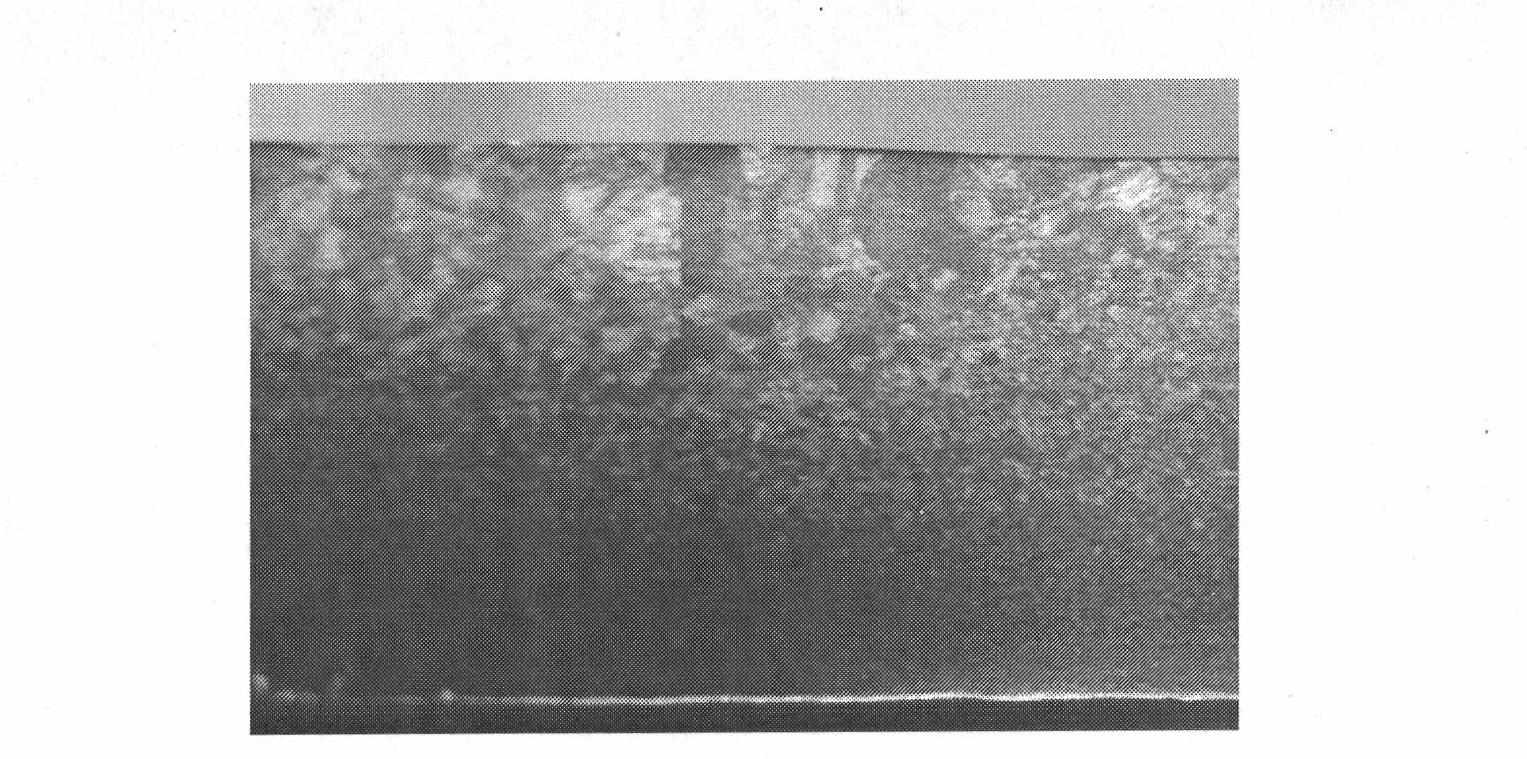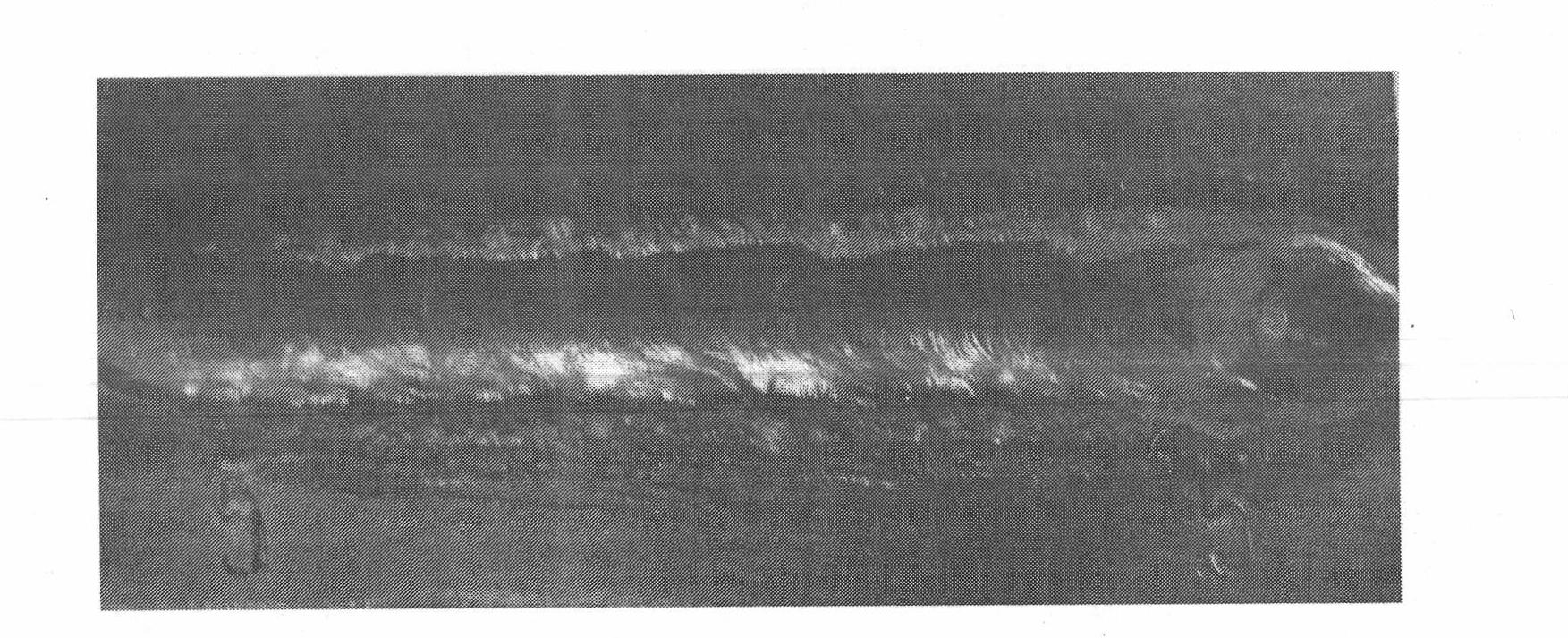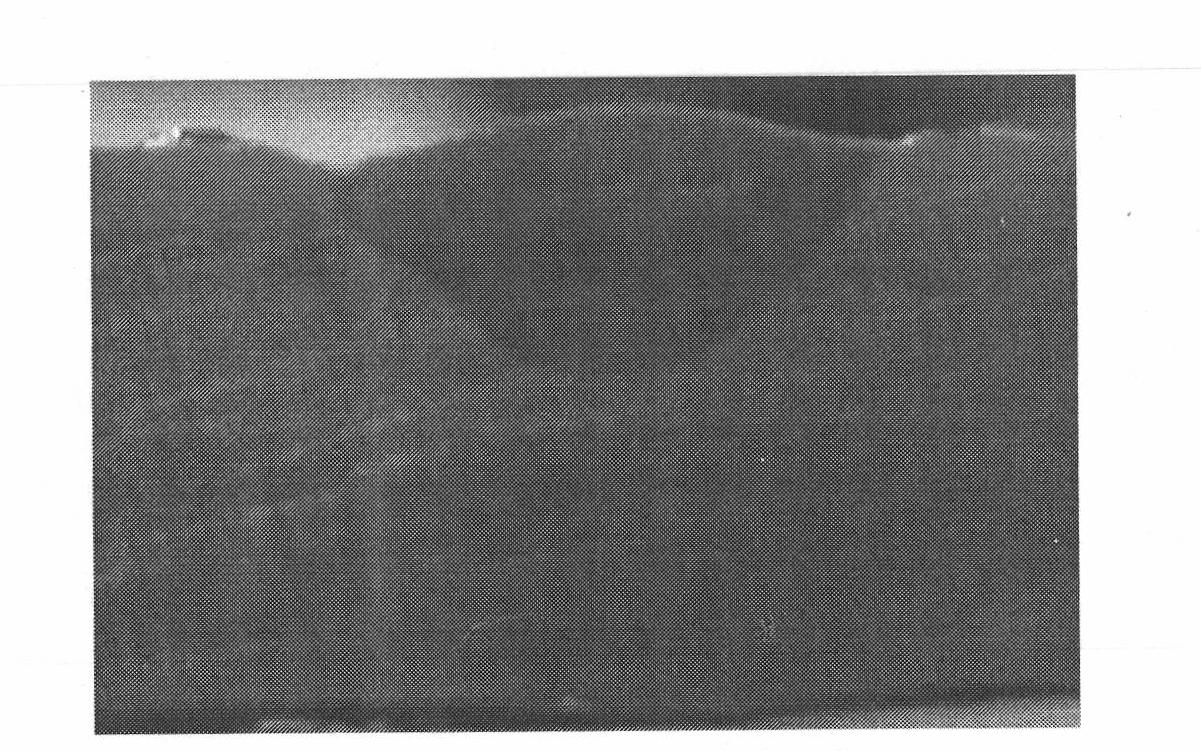Active agent for titanium alloy tungsten electrode argon arc welding
A technology of argon tungsten arc welding and active agent, which is applied in the direction of arc welding equipment, welding medium, welding equipment, etc., can solve the problems of low energy density of TIG arc, low welding efficiency, increased welding deformation, etc. Microstructure, improving welding production efficiency and reducing welding deformation
- Summary
- Abstract
- Description
- Claims
- Application Information
AI Technical Summary
Problems solved by technology
Method used
Image
Examples
Embodiment 1
[0010] DC positive connection A-TIG welding is performed, and the welding process specification is shown in Table 1. When welding using the welding specification parameters in Table 1, the weld penetration of traditional TIG welding is 1.7mm and the penetration width is 9.2mm. figure 1 shown. When using the welding specification in Table 1 for A-TIG welding, the formulation of the active agent and the weld penetration and width are shown in Table 2.
[0011] Table 1 Welding specification parameters
[0012]
[0013] Table 2 Activator formulation and weld penetration and width
[0014]
[0015]
[0016] It can be seen from Table 2 that the A-TIG welding of titanium alloys using the activator of the present invention can significantly increase the weld penetration. Especially the No. 2 specimen, the penetration depth is 2.3 times that of conventional TIG welding, and the aspect ratio of the weld is 0.58. The surface and cross-section of the weld are as follows: fig...
Embodiment 2
[0018] For DC positive A-TIG welding, the composition and mass percentage of the activator used are CaF225%, CrCl3 15%, KF 10%, Te 45%. The diameter of the tungsten electrode selected for welding is 3.2mm, and the angle of the tip of the tungsten electrode is 45°.
[0019] Table 3 Welding Specification Parameters and Weld Penetration Width
[0020]
Embodiment 3
[0022] DC positive connection A-TIG welding is carried out. The welding specification is shown in Table 4. The composition and mass percentage of the active agent used are CaF. 2 25%, CrCl 3 15%, KF 10%, Te 45%. Weld cross section as Figure 4 As shown, the weld penetration reaches 2.94 times that of TIG welding with the same specification parameters. Weld X-ray inspection photos such as Figure 5 As shown, the weld is free of cracks, lack of fusion, bar defects, and round defects such as pores. The chemical composition of the weld is shown in Table 5. When welding using the welding specifications in Table 4, the weld microstructures of TIG welding and A-TIG welding are as follows: Image 6 and Figure 7 As shown, the active agent acts to refine the grains. A tensile test of the weld seam is carried out, and the weld seam is broken from the base metal, such as Figure 8 shown, the strength is higher than that of a TIG welded seam under the same welding specification. ...
PUM
 Login to View More
Login to View More Abstract
Description
Claims
Application Information
 Login to View More
Login to View More - R&D
- Intellectual Property
- Life Sciences
- Materials
- Tech Scout
- Unparalleled Data Quality
- Higher Quality Content
- 60% Fewer Hallucinations
Browse by: Latest US Patents, China's latest patents, Technical Efficacy Thesaurus, Application Domain, Technology Topic, Popular Technical Reports.
© 2025 PatSnap. All rights reserved.Legal|Privacy policy|Modern Slavery Act Transparency Statement|Sitemap|About US| Contact US: help@patsnap.com



